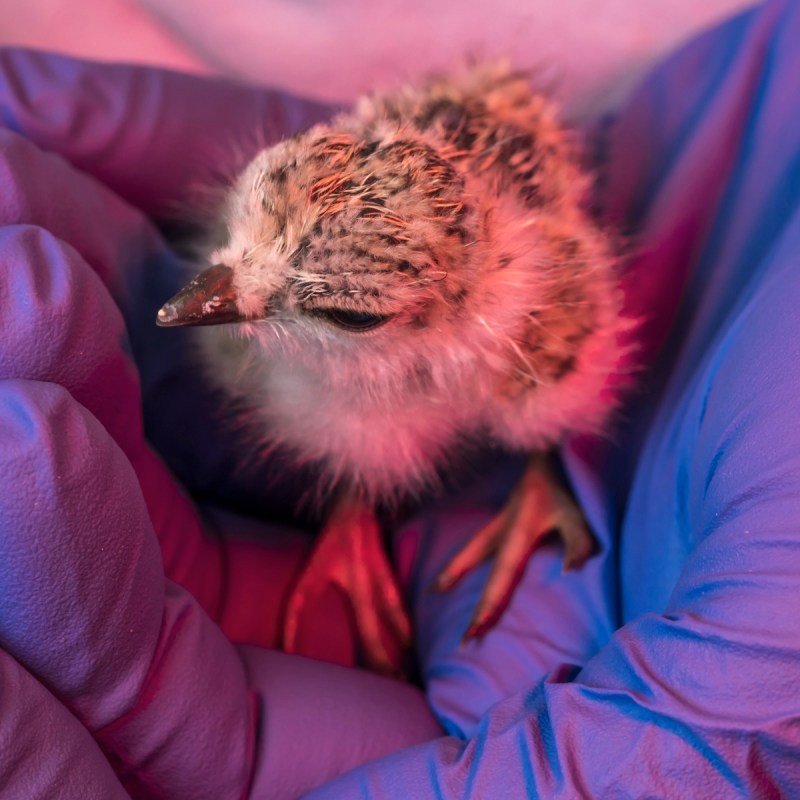
Charadrius melodus is an endangered shorebird commonly known as the piping plover. Three regions have small piping plover populations: the Great Lakes, the Atlantic Coast, and the Great Plains. While they summer separately during the breeding season, they winter together on the Gulf Coast. In 1986, piping plovers flew onto the Federal Endangered Species list. At one point, the Great Lakes had almost 800 pairs of piping plovers, but by 1990, that number dropped to 13. Today, Sleeping Bear Dunes National Lakeshore is home to the most significant number of piping plovers in the Great Lakes, where you’ll find between 75 and 80 nesting pairs throughout the region.
Videos by TravelAwaits
These tiny treasures wear white pants and a sand-colored topcoat, so their beachy environment perfectly camouflages them. In addition, piping plovers only nest on beaches, with a preference for those with gravel.
Here are organizations helping these endangered shorebirds and where and when you can see them in their habitats.
Why Piping Plover Became Endangered
Habitat loss and predators are the two primary reasons the Great Lakes population has become endangered. In addition, their beach nesting areas have become recreational and developed areas for humans. Domestic animals and wild predators kill piping plovers and destroy their eggs. Predators include dogs, raccoons, seagulls, and crows.
How Organizations Are Aiding Their Comeback
Many organizations are working together to aid the recovery of these tiny treasures. Sleeping Bear Dunes works with the United States Fish and Wildlife Service, the University of Michigan Biological Station, the Michigan DNR, and the University of Minnesota. The Great Lakes Piping Plover Conservation Team also works toward this common goal. Other non-government organizations, the Great Lakes tribes, and private citizens complete the team.
Wildlife monitors begin watching their activities when the piping plovers return in spring. Workers rope off nesting areas to protect them once these birds establish their territories. Once a worker discovers a nest, trained staff members build a wire fence with a mesh top, preventing predators from damaging the eggs and allowing plovers to access their nests easily.
This practice also prevents beach walkers from accidentally crushing the eggs that blend into the shoreline. It also stops any interference with the nest that may result in the birds abandoning them.
While the eggs incubate, workers monitor pairs of piping plovers to ensure that both parents care for their eggs. If only one from the pair is there, the other will probably abandon the nest. When this happens, park employees will take the eggs to the University of Michigan’s Biological Station, where they will be raised in captivity and returned to the wild once they are independent. Then, the baby chicks will be monitored until they can fly.
I learned from my contact at Sleeping Bear Tour Company that the final Great Lakes piping plover count in 2023 was 80 unique pairs, with 67 fledged chicks. I was excited to learn of the large number of babies.
When You Can See Them
The Great Lakes piping plovers make their home on the shores of the Great Lakes from April through August, but what you’ll see depends on the time you visit. I timed my visit in mid-May and the Great Lakes piping plovers were returning to the area and building their nests. There were three nesting pairs in the area then and I was quite excited to see two of the six birds. While I sat quietly along the shoreline, waiting patiently, the shorebirds came to feed. They blend into the environment so completely that you spot them through their movement.
The piping plover builds its nests and raises its young through the summer. By mid-July, the females form flocks and begin migrating south. The males stay behind to guard the babies until they can fly. By late July, the rest of the family also begins their migration. By the end of August, all the piping plovers leave for their winter homes and won’t return until April.
If you want to see the baby chicks, June is the best time to visit the Sleeping Bear Dunes National Lakeshore. Within hours of hatching, they’ll be running around and feeding. It then takes about a month for them to be able to fly.
Where You Can See Them
You’ll find the most significant number of Great Lakes piping plovers on Michigan’s Sleeping Bear Dunes National Lakeshore. I wanted the best chance of seeing them, so I hired a private guide through Sleeping Bear Tour Company. My guide used to work for the National Park Service, so I learned a lot about the piping plover and the lakeshore.
Schedule a guided walking tour of the piping plovers and their habitat from May through July.
What You Can Do To Help
While many organizations are working to bring the piping plover off the Endangered Species list, you don’t have to be a member of one of these organizations to help.
Here are several things you can do to help:
- Follow instructions on the signs. They will advise you of any restrictions on the beach that will protect the piping plover.
- While you’re birdwatching, obey the fenced-off areas. Then, enjoy the plovers from a distance. If you find a plover family outside the fencing, give them space. You can easily accidentally step on the tiny chicks.
- Walk carefully. The eggs appear like beach stones. The birds blend into the shore, so until you see movement or hear their calls, you may not realize they are close by.
- Keep your pets on a leash. On beaches that don’t allow pets, leave them at home.
- Don’t feed the seagulls. Readily available food attracts the gulls and they are predators of the piping plover.
- For the same reason, pack out all food waste after picnics on the beach.
- Report anyone pestering the piping plovers to the Sleeping Bear Dunes Headquarters at 231-326-5134.
- Also report unprotected nests to the Sleeping Bear Dunes Headquarters, so that workers can protect them as soon as possible.
What Else You Can Do At The Sleeping Bear Dunes National Lakeshore
Stop by the Visitor Center at 9922 Front Street in Empire for more information and guidance on visiting the Sleeping Bear Dunes National Lakeshore.
Pro Tip: You will need a national park pass from the National Park Service to enter the park. The Standard Entrance Pass costs between $15 and $25 depending on the type of vehicle used to enter the park. Passes are valid for everyone within the vehicle.
